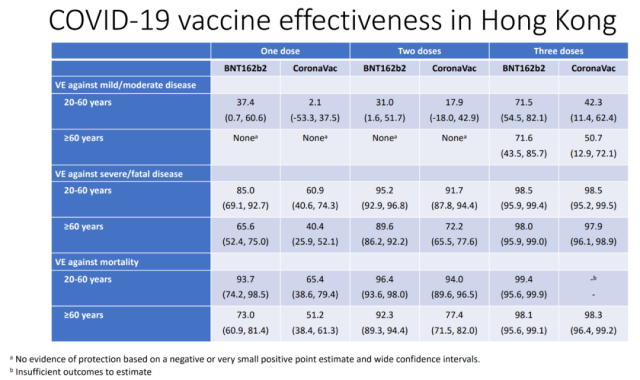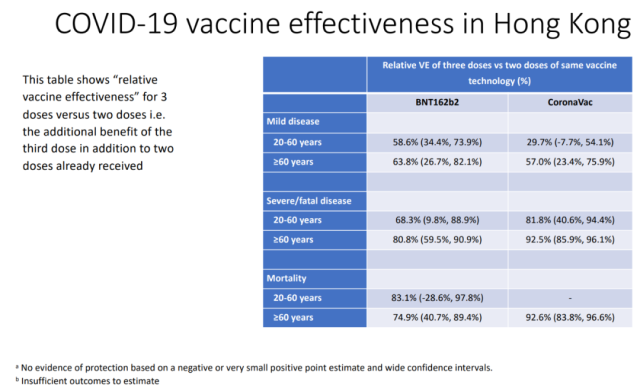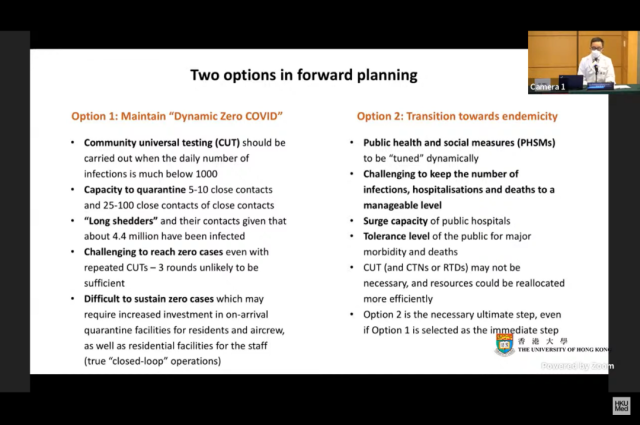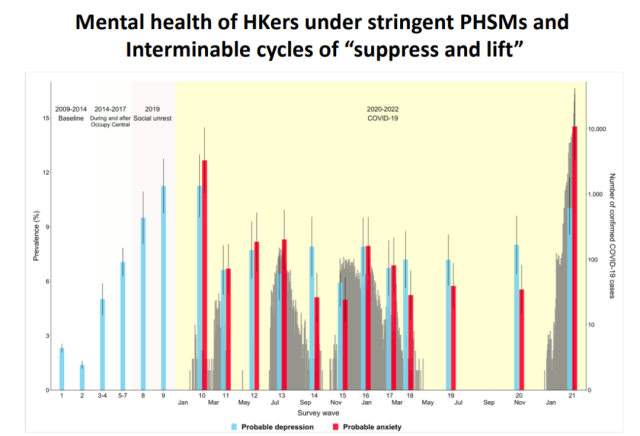3 doses of these two COVID-19 vaccines can prevent severe illness and death
- WHO Releases Global Influenza Vaccine Market Study in 2024
- HIV Infections Linked to Unlicensed Spa’s Vampire Facial Treatments
- A Single US$2.15-Million Injection to Block 90% of Cancer Cell Formation
- WIV: Prevention of New Disease X and Investigation of the Origin of COVID-19
- Why Botulinum Toxin Reigns as One of the Deadliest Poisons?
- FDA Approves Pfizer’s One-Time Gene Therapy for Hemophilia B: $3.5 Million per Dose
3 doses of these two COVID-19 vaccines can prevent severe illness and death
- Red Yeast Rice Scare Grips Japan: Over 114 Hospitalized and 5 Deaths
- Long COVID Brain Fog: Blood-Brain Barrier Damage and Persistent Inflammation
- FDA has mandated a top-level black box warning for all marketed CAR-T therapies
- Can people with high blood pressure eat peanuts?
- What is the difference between dopamine and dobutamine?
- How long can the patient live after heart stent surgery?
Hong Kong University confirmed that 3 doses of these two COVID-19 vaccines can prevent severe illness and death, and the protective power exceeds 97%!
The effectiveness of the Covid-19 vaccine is supported by the latest and robust real-world data.
On March 22, the Li Ka Shing Faculty of Medicine of the University of Hong Kong held a press conference to report on the “forward-looking plan after the fifth wave of the epidemic in Hong Kong SAR” (hereinafter referred to as “forward-looking plan”) .
At the meeting, Dean Liang Zhuowei shared a set of vaccination data. The results show that under the widespread dissemination of the BA.2 sub-strain of Omicron, regardless of age, 3 doses of inactivated (SINOVAC “Kerlefu”) or mRNA (Fosun-BIONTECH) COVID-19 vaccines are all effective. It can effectively prevent severe illness or death, and the protection power exceeds 97%.

Image from youtube HKUMed
2 to 3 doses, the protection is significantly improved
Relevant research from the Li Ka Shing Faculty of Medicine of the University of Hong Kong discussed the different levels of illness, age groups, and vaccination doses under the epidemic.
The mainstream vaccinations in the Hong Kong SAR are inactivated (SINOVAC “Kerlaifu”) vaccine and mRNA (Fosun-BIONTECH) vaccine.
The results showed that 3 doses provided excellent protection regardless of which of the two was administered.
For people aged 20-60, after the third dose of the mRNA COVID-19 vaccine, the protection against severe illness and death was 98.5% and 99.4%, respectively. If the third shot is inoculated with an inactivated vaccine, the protection against severe illness is 98.5%. Insufficient data on death prevention.
For people over 60 years old, the protection against severe illness and death of the third mRNA vaccine was 98.0% and 98.1%, respectively. If the inactivated vaccine is vaccinated, the relative protection is 97.9% and 98.3%.
In terms of preventing mild/common infections, 3 doses of mRNA or inactivated vaccine for 20-60-year-olds had protective powers of 71.5% and 42.3%, respectively. For people over 60 years old, the relevant protective powers were 71.6% and 50.7%, respectively.
If 2 doses are completed, the vaccine also performs well.
In terms of preventing severe/critical illness:
- People aged 20-60 receive 2 doses of mRNA COVID-19 vaccine, and the protective power can increase from 85% (1 dose) to 95.2%; for people in this age group, when 2 doses of inactivated vaccine, the protective power can increase from 60.9% (1 dose) to 91.7%.
- Among people over 60 years old, the protection of 2 doses of mRNA COVID-19 vaccine or inactivated vaccine was 89.6% and 72.2%, respectively.
In terms of preventing death:
- People aged 20-60 were vaccinated with 2 doses of mRNA COVID-19 vaccine or inactivated vaccine, and the protective power was 96.4% and 94%, respectively.
- In people over 60 years old, after receiving 2 doses of mRNA COVID-19 vaccine or inactivated vaccine, the protection is 92.3% and 77.4%.
 Image courtesy of HKUMed
Image courtesy of HKUMed
The study further compared the “relative vaccine efficacy” of 3 and 2 doses.
Taking 3 doses of inactivated vaccine:
2 doses as an example, in people aged 20-60, the protection against severe illness will increase by 81.8%. For people over 60 years of age, the efficacy in preventing severe illness/death was increased by 92.5% and 92.6%.
This means that in the face of BA.2 with strong transmission and immune escape, 3 doses of mRNA and inactivated vaccines are both effective in preventing severe illness/death.
This also suggests that completing 3 doses of vaccination is a necessary means to deal with the Omicron epidemic. It can significantly reduce the fatality rate, reduce the burden of disease, and reduce medical runs.
 Image courtesy of HKUMed
Image courtesy of HKUMed
The next step in the SAR’s epidemic prevention: facing a choice between two
Leung Cheuk-wai is also an expert advisor to the SAR government. At the press conference on the 22nd, he focused on discussing the “next step of epidemic prevention in the SAR”.
He said that the SAR government and society should make a choice between the two options listed in the “forward-looking plan” before the end of April, whether to continue to “dynamically clear” or “towards endemic diseases (endemic diseases) ” .
 Image from youtube HKUMed
Image from youtube HKUMed
If you insist on “dynamic clearing”, you need to do national testing. This helps to find a large number of “hidden patients” with the power of transmission.
Liang Zhuowei said that the advantage of “dynamic clearing” is that it can return the society to the state before the fifth wave of the epidemic. But one of the difficulties is that the best time for universal testing has passed.
The best time is from the end of January to the beginning of February 2022 to do more than 3 rounds of testing for all staff.
At the same time, it is necessary to consider the isolation of confirmed patients after the “full test”, the quarantine of close contacts and sub-close contacts, and how to deal with some nucleic acid test Changyang patients.
In addition, it is necessary to consider upgrading the inspection and quarantine of airports and anti-epidemic hotels to ensure that no water leaks, so as to avoid the recurrence of “leakage” of anti-epidemic hotels and cause a major outbreak of the epidemic.
Another option is “Go To Terroir”. To make this choice, to rely on a higher “mixed immunity.”
“Mixed immunity” refers to a population of people who have been vaccinated and who have recovered from the infection, and who have immune protection against (re) infection with the virus, as well as hospitalization and death. The prerequisite is that enough people get 3 shots or at least 2 shots.
According to the model of the Faculty of Medicine of the University of Hong Kong, as of March 20, about 60% of the Hong Kong SAR population, or 4.4 million people, have been infected with the COVID-19, and the peak of the fifth round of the epidemic has passed. At the same time, vaccination has been continuously improved.
At present, the 1-dose vaccination rate for people over 12 years old has exceeded 90%, and the 2-dose vaccination rate accounts for more than 80% of the total population. This makes “mixed immunity” possible.
If you choose to “go towards endemic diseases”, the biggest epidemic prevention goal will focus on the “three reductions”, namely reducing severe illness, reducing deaths and reducing hospital load, so as to ensure that the number of hospital admissions does not exceed the carrying capacity of the Hospital Authority. To minimize the death rate and reduce the number of deaths to zero as much as possible, “beds are always waiting for people, not people waiting for beds.” Once there is a sign that the medical system will be overloaded, it is necessary to strengthen or tighten epidemic prevention measures.
“Which strategy to choose will be controversial, and I have noticed it. But in science, these two are just the difference between early and late. Scientists all over the world agree that the new coronavirus will definitely stay in the human world for a long time. Six waves of epidemics cannot be avoided.” Liang Zhuowei said that based on scientific and public health theory, it may be safer to gradually “go towards endemic diseases” when the epidemic is under control.
 Photo caption: Under the epidemic, the people of Hong Kong SAR suffered from anti-epidemic fatigue, depression and anxiety. In January 2022, the depression rate of the people in the SAR will reach 1 in 10. Anxiety symptoms ranged from 13% to 14%. /HKUMed
Photo caption: Under the epidemic, the people of Hong Kong SAR suffered from anti-epidemic fatigue, depression and anxiety. In January 2022, the depression rate of the people in the SAR will reach 1 in 10. Anxiety symptoms ranged from 13% to 14%. /HKUMed
According to the “forward-looking planning” data, if there is no invasion of new variants and no large-scale rebound in data, by April 21, the daily number of new cases in Hong Kong SAR will drop to three digits, that is, less than 1,000 people. By then, the fifth round of the epidemic in the Hong Kong SAR will have about 4.5 million infections and 8,383 deaths.
Liang Zhuowei emphasized that his speech is not for the SAR government to make a choice, but to make decisions as soon as possible, to build consensus in the society, and to make two major preparations in advance, including the first, to increase the vaccination rate. The vaccination rate of the above two doses is at least 90%; second, to ensure the effective supply of oral anti-coronavirus drugs. The data model shows that the coverage rate of oral anti-coronavirus drugs is 56%, and the daily number of hospital admissions is about 521, which is close to the upper limit of the medical system’s capacity; if the coverage rate reaches 80%, the daily number of hospitalizations is about 377.
According to the “forward-looking plan”, assuming that the SAR will be fully opened from June 1, the peak of the sixth wave of the epidemic may appear in the first week of early June, and it will last for about two months. The cumulative number of infections in this round of epidemic may reach 2.21 million, and the cumulative number of deaths is 1,540.
“As long as one day it is decided to slowly relax the measures, there will definitely be a new wave of epidemics.” Liang Zhuowei said.
references:
[1] The Faculty of Medicine of the University of Hong Kong proposes a forward-looking plan for Hong Kong after experiencing the fifth wave of the novel coronavirus disease.med.hku.hk.
[2]Updates on Modelling the Omicron Fifth Wave.youtube HKUMed.
3 doses of these two COVID-19 vaccines can prevent severe illness and death
(source:internet, reference only)
Disclaimer of medicaltrend.org
Important Note: The information provided is for informational purposes only and should not be considered as medical advice.



